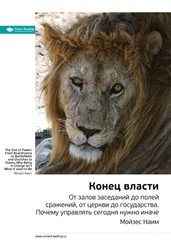Данные зависят от распространенности аутоиммунного заболевания. В развитых странах от трех до восьми процентов населения страдает от одного или более из восьмидесяти аутоиммунных или воспалительных заболеваний. Pierre Youinou et al. “Geo-epidemiology and Autoimmunity”. Journal of Autoimmunity 34, № 3 (2010).
N. A. Molodecky et al. “Increasing Incidence and Prevalence of the Inflammatory Bowel Diseases with Time, Based on Systematic Review”. Gastroenterology 142, № 1 (2012).
Edwin A. M. Gale. “The Rise of Childhood Type 1 Diabetes in the 20th Century”. Diabetes 51, № 12 (2002).
Alberto Rubio-Tapia et al. “Increased Prevalence and Mortality in Undiagnosed Celiac Disease”. Gastroenterology 137, № 1 (2009).
Jean-Francois Bach. “The Effect of Infections on Susceptibility to Autoimmune and Allergic Diseases”. New England Journal of Medicine 347, № 12 (2002).
“Worldwide Variation in Prevalence of Symptoms of Asthma, Allergic Rhinoconjunctivitis, and Atopic Eczema: ISAAC. The International Study of Asthma and Allergies in Childhood (ISAAC) Steering Committee”. Lancet 351, № 9111 (1998).
“Incidence and Trends of Childhood Type 1 Diabetes Worldwide 1990–1999”. Diabetic Medicine 23, № 8 (2006). Christopher C. Patterson и EURODIAB Study Group. “Incidence Trends for Childhood Type 1 Diabetes in Europe during 1989–2003 and Predicted New Cases 2005–2020: A Multicentre Prospective Registration Study”. Lancet 373, № 9680 (2009).
G. A. W. Rook. “The Gut, Immunoregulation and Micro-organisms from Man’s Evolutionary Past”. Nutrition Bulletin (2010).
Полные статистические данные о распространенности иммуноопосредованных заболеваний в Цимании предоставил сам Майкл Гурвен. По состоянию на 26 октября 2011 года они были такими: восемь случаев аллергического ринита; ни одного случая астмы. Данные о распространенности аутоиммунных заболеваний: 12,3 случая на 10 000 человек. В медицинском обследовании приняли участие 12 116 человек. Некоторые пациенты проходили обследование несколько раз. Общее количество обследований, которые провела команда Гурвена, — 37 000; эти обследования охватили более 95% членов племени цимане.
А. Магдалена Уртадо и Ким Хилл на протяжении многих лет изучали племя хиви, обитающее на равнинах Венесуэлы, а также племя аче, которое живет в парагвайской части Амазонии. У членов этих племен нет ни астмы, ни высокого давления, ни диабета. Magdalena Hurtado, Kim Hill, and I. Arenas De Hurtado Selva Rodriguez. “The Evolutionary Context of Chronic Allergic Conditions: The Hiwi of Venezuela”. Human Nature 8, № 1 (1997).
Gurven, Michael, et al. “Mortality Experience of Tsimane Amerindians of Bolivia: Regional Variation and Temporal Trends”. American Journal of Human Biology 19, № 3 (2007).
Марк Джексон высказывает эту мысль в своей книге «Аллергия: история современного заболевания» (Allergy: The History of a Modern Malady).
William Parker. “Reconstituting the Depleted Biome to Prevent Immune Disorders”. Evolution & Medicine Review (2010). http://evmedreview.com/?p=457.
Berkley R. Powell, Neil R. M. Buist, and Peter Stenzel. “An X-linked Syndrome of Diarrhea, Polyendocrinopathy, and Fatal Infection in Infancy”. Journal of Pediatrics 100, № 5 (1982).
C. L. Bennett et al. “The Immune Dysregulation, Polyendocrinopathy, Enteropathy, X-linked Syndrome (IPEX) Is Caused by Mutations of FOXP3”. Nature Genetics 27, № 1 (2001).
Речь идет о результатах многих исследований. Более подробную информацию см.: Leonie Taams, Arne N. Akbar, and Marca H. M. Wauben. Regulatory T-cells in Inflammation, Progress in Inflammation Research. Basel and Boston: Birkhäuser, 2005, 3–17.
Книга написана в 2012 году . Прим. ред.
William McNeill. Plagues and People, 5.
R. W. Ashford and W. Crewe. The Parasites of Homo Sapiens: An Annotated Checklist of the Protozoa, Helminths and Arthropods for Which We Are Home. London: Taylor & Francis, 200), IX.
George J. Armelagos. “The Paleolithic Disease-scape, the Hygiene Hypothesis, and the Second Epidemiological Transition” // The Hygiene Hypothesis and Darwinian Medicine. Basel and Boston: Birkhäuser, 2009.
Все статистические данные взяты из дискуссионного раздела указанной ниже обзорной статьи, в которой основное внимание уделяется племени хадза из Танзании, а также идет речь о племени кунг и других племенах. F. J. Bennett et al. “Helminth and Protozoal Parasites of the Hadza of Tanzania”. Transactions of the Royal Society of Tropical Medicine and Hygiene 64, № 6 (1970).
В ходе исследования диких шимпанзе, проведенного в 1976 году в Танзании, было обнаружено шесть разных видов гельминтов и два вида простейших. Из 32 обследованных особей все были заражены минимум одним, а большинство — несколькими паразитами. S. K. File, W. C. McGrew, and C. E. Tutin. “The Intestinal Parasites of a Community of Feral Chimpanzees, Pan Troglodytes Schweinfurthii”. Journal of Parasitology 62, № 2 (1976).
R. W. Ashford. “Parasites as Indicators of Human Biology and Evolution”. Journal of Medical Microbiology 49, № 9 (2000).
E. P. Hoberg. “Phylogeny of Taenia: Species Definitions and Origins of Human Parasites”. Parasitology International 55 Suppl. (2006).
David L. Reed et al. “Pair of Lice Lost or Parasites Regained: The Evolutionary History of Anthropoid Primate Lice”. BMC Biology 5 (2007).
Nicholas Wade. “In Lice, Clues to Human Origin and Attire”. The New York Times, March 8, 2007.
Robin A. Weiss. “Apes, Lice and Prehistory”. Journal of Biology 8, № 2 (2009).
Читать дальше
Конец ознакомительного отрывка
Купить книгу






![Дмитрий Процко - Эпидемия. Записки из сумасшедших туров #Туровыебудни [litres]](/books/385244/dmitrij-procko-epidemiya-zapiski-iz-sumasshedshih-tu-thumb.webp)





